Did social trends lead to yacht tragedy?
Published on August 23rd, 2024
The sinking of the 184-foot luxury yacht Bayesian, which led to seven deaths among the 22 people on board, has attracted significant attention. In this report, yacht designer Chris Freer believes social trends are a contributing factor:
This is a one in a million tragedy but we should examine the facts and learn from them.
Bayesian boasts the second highest mast in the world at 75 metres on a length of 56m. She has a lifting keel to enable her to get into shallow areas. Fully down it gives a draft of 9.83m and raised a draft of 4m. A sailing yacht has a keel to counter the heeling moment generated by the power of her sail plan.
I’m sorry to say that size matters to a superyacht owner and naval architects are seduced into providing solutions. As yacht size increases, the resistance of the hull reduces in proportion, so less sail area is required to adequately power longer yachts.
But these floating fashion items are driven by appearance and bragging rights – and you lose prestige if someone has a bigger mast than you.
Always, the status pecking order questions are – how big – how fast – what cost – and is it black? If you designed Bayesian with a reasonable sail area and a ‘normal’ mast, she would not look impressive – which is what superyachts have to be.
The stability of a yacht has to be sufficient to counter the power of the rig but, as mast heights increase, the keels can often become so deep that the places of interest are restricted hence the lifting keel solution. Stability comes from two factors – the hull form and the ballast keel which acts like a pendulum. As the yacht heels, the volume of the immersed hull section produce a buoyancy force which resists heeling.
Initially the keel gives little force but as the angle of heel increases ‘physics’ makes the keel contribution significant (leverage). The greater the keel length, the greater the effect. The combination of the hull buoyancy on the heeled side and the keel on the ‘windward’ side produces the force necessary to keep the yacht from capsize. If the keel of Bayesian was retracted it would lose a significant six meters of moment arm or leverage from its probable 200 tons of keel bulb.
When we design yachts, we calculate the stability, or righting lever, as a function of heeled ‘buoyancy’ force and the ballast moment arm combined (the GZ). This can be plotted on a graph to show the stability at any heel angle and identifies the angle at which stability becomes negative causing the yacht to capsize. Normally an ocean yacht will experience a negative point at about 120 degrees of heel. With a lifting keel, this point is greatly reduced maybe to less than 90 degrees.
If Bayesian was at anchor with the keel raised and no sail up, the crew would have every confidence that she could remain safe in most normal wind conditions. Every captain at this level has passed an exam on stability and would be aware of his vessel’s stability graph.
Many years ago, I sat at Cremorne and watched a spiraling williwaw race across Sydney Harbor and pass through Mosman. This twister was only about 30 metres wide but it destroyed houses and overturned cars in its path. A few feet away nothing was harmed. The power of a twister is intense and powerful with the wind is coming from every direction. This was what hit Bayesian.
The problem of large rigs is windage, even with no sails. But this yacht had three furling sails forward and a big boom with the weight of a furled mainsail inside all above the center of gravity. Also, there were a few communication domes on the spreaders.
We use a Wind Pressure Coefficient (WPC) to measure the force of the wind on the rig and sails. Even without sails, the WPC for Bayesian must have been pretty large when hit by a wind force of varying direction with a local velocity way above the norm.
Once she was knocked down beyond her stability limit with the keel up, she stood no chance and, laying flat to the water, her deck openings would have allowed a flood of water aboard and she would founder. This would happen in a couple of minutes. The observation of a lightning strike can be discounted because these vessels are grounded and any damage from a strike would have caused a slow sinking at worst – not a capsize and founder.
The individuals within a professional crew with sailing experience may have sensed the wind and motion of the vessel and quickly reacted to instinctively save themselves in the seconds they had. My guess is that some were already on deck alarmed by the general conditions.
However, the guests would have found themselves totally disoriented in flooding cabins, in darkness with the walls, doors and passageways at ninety degrees to the norm. They had practically no chance because it would be completely beyond their experience. The crew would have been unable to be of any help due to the speed of the unexpected event.
I have been a professional yacht designer and builder for fifty years specializing in lifting keel yachts. My son, a professional navigator, was Third Officer on a ketch superyacht with masts 100m tall; a yacht so big, at 88metres, that it was almost beyond human handling even with the machinery on board.
But of course, it is the biggest and most expensive’ etc etc. What we have here is a one-off accident which is a wakeup call to an industry where common sense has departed as yachts get sillier in size and design.
In summary, Bayesian was caught in the wrong place at the wrong time. A freak accident which the designers and crew would have little chance to predict. If the keel had been down, she would have probably survived the knock down. But without sails up, the crew would have experience of her basic stability for normal conditions which would have felt adequate.
Any enquiry must examine the design factors such as the stability vanishing point in the condition she was at the time of the accident; keel up, tank loadings and rig factors for windage (WPC) and center of gravity etc. And a calculation of the wind force required to heel the boat to 90 degrees in the condition at the time of the accident.
All forms of transport have had these unpredictable one-off events leading to changes of regulations and professional practice. Titanic, Boeing, 1955 Le Mans, the 1952 Farnborough crash, the 1979 Fastnet – all have made a difference and these events all came unpredicted and out of the blue, often at a time of complacency.


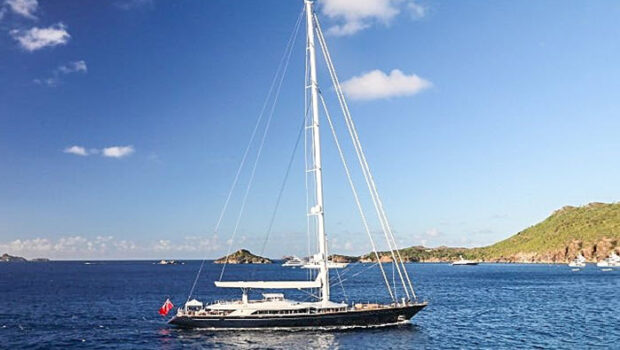


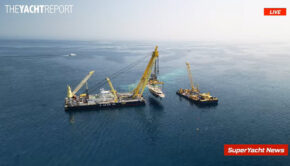
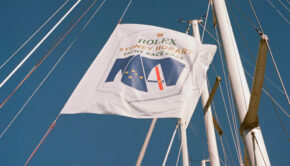
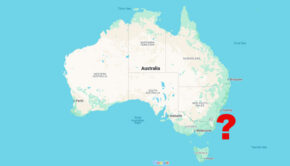
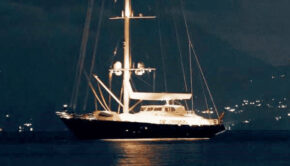
 We’ll keep your information safe.
We’ll keep your information safe.